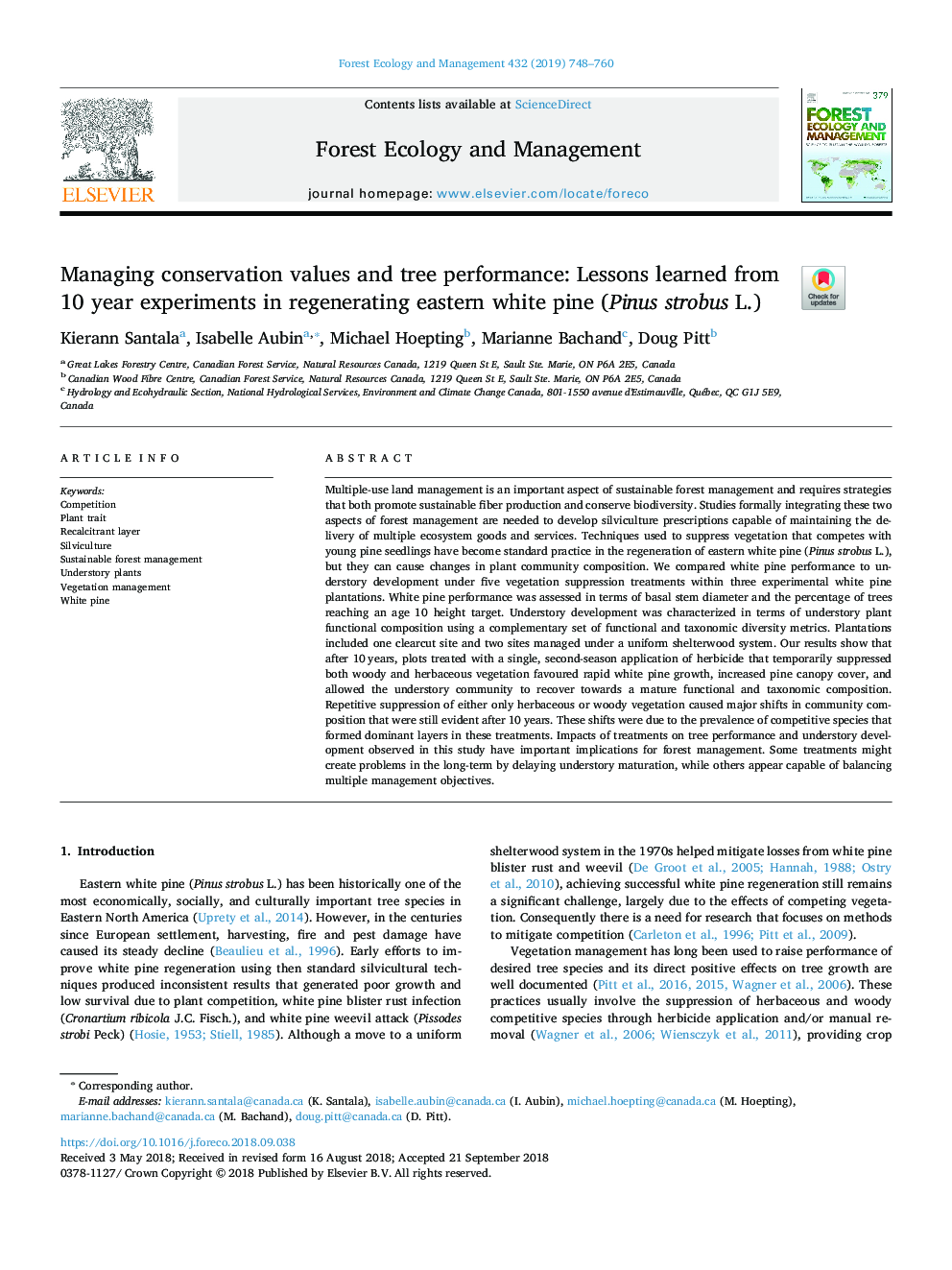| کد مقاله | کد نشریه | سال انتشار | مقاله انگلیسی | نسخه تمام متن |
|---|---|---|---|---|
| 11028414 | 1662523 | 2019 | 13 صفحه PDF | دانلود رایگان |
عنوان انگلیسی مقاله ISI
Managing conservation values and tree performance: Lessons learned from 10 year experiments in regenerating eastern white pine (Pinus strobus L.)
دانلود مقاله + سفارش ترجمه
دانلود مقاله ISI انگلیسی
رایگان برای ایرانیان
کلمات کلیدی
موضوعات مرتبط
علوم زیستی و بیوفناوری
علوم کشاورزی و بیولوژیک
بوم شناسی، تکامل، رفتار و سامانه شناسی
پیش نمایش صفحه اول مقاله

چکیده انگلیسی
Multiple-use land management is an important aspect of sustainable forest management and requires strategies that both promote sustainable fiber production and conserve biodiversity. Studies formally integrating these two aspects of forest management are needed to develop silviculture prescriptions capable of maintaining the delivery of multiple ecosystem goods and services. Techniques used to suppress vegetation that competes with young pine seedlings have become standard practice in the regeneration of eastern white pine (Pinus strobus L.), but they can cause changes in plant community composition. We compared white pine performance to understory development under five vegetation suppression treatments within three experimental white pine plantations. White pine performance was assessed in terms of basal stem diameter and the percentage of trees reaching an age 10 height target. Understory development was characterized in terms of understory plant functional composition using a complementary set of functional and taxonomic diversity metrics. Plantations included one clearcut site and two sites managed under a uniform shelterwood system. Our results show that after 10â¯years, plots treated with a single, second-season application of herbicide that temporarily suppressed both woody and herbaceous vegetation favoured rapid white pine growth, increased pine canopy cover, and allowed the understory community to recover towards a mature functional and taxonomic composition. Repetitive suppression of either only herbaceous or woody vegetation caused major shifts in community composition that were still evident after 10â¯years. These shifts were due to the prevalence of competitive species that formed dominant layers in these treatments. Impacts of treatments on tree performance and understory development observed in this study have important implications for forest management. Some treatments might create problems in the long-term by delaying understory maturation, while others appear capable of balancing multiple management objectives.
ناشر
Database: Elsevier - ScienceDirect (ساینس دایرکت)
Journal: Forest Ecology and Management - Volume 432, 15 January 2019, Pages 748-760
Journal: Forest Ecology and Management - Volume 432, 15 January 2019, Pages 748-760
نویسندگان
Kierann Santala, Isabelle Aubin, Michael Hoepting, Marianne Bachand, Doug Pitt,